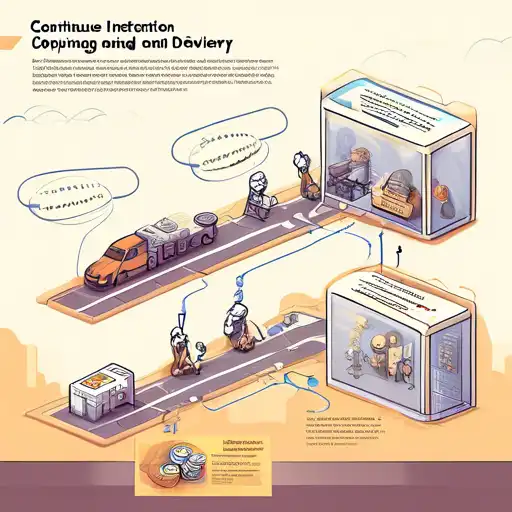What is Continuous Integration and Delivery?
Continuous Integration (CI) and Continuous Delivery (CD) are pivotal practices in modern software development, aimed at improving the speed and quality of software releases. CI/CD automates the integration of code changes from multiple contributors into a single software project, ensuring that the software can be reliably released at any time.
The Benefits of CI/CD
Implementing CI/CD brings numerous benefits to development teams, including:
- Reduced integration problems
- Faster release rates
- Higher quality software
- Improved developer productivity
By automating the build, test, and deployment processes, teams can focus more on development and less on the logistics of software release.
How CI/CD Works
CI/CD pipelines are the backbone of these practices. A typical pipeline includes several stages:
- Code is committed to a version control repository.
- The CI server automatically triggers a build and runs tests.
- If the build passes, it moves to the deployment stage.
- The CD process deploys the code to production or staging environments.
This automation ensures that every change is tested and ready for deployment, minimizing the risk of errors in production.
Best Practices for CI/CD
To maximize the effectiveness of CI/CD, consider the following best practices:
- Maintain a single source repository.
- Automate the build process.
- Make your build self-testing.
- Keep the build fast.
- Test in a clone of the production environment.
Adhering to these practices can significantly enhance the efficiency and reliability of your software development lifecycle.
Challenges in Implementing CI/CD
While CI/CD offers many advantages, teams may face challenges such as:
- Initial setup complexity
- Cultural resistance to change
- Integration with legacy systems
Overcoming these challenges requires a commitment to continuous improvement and a willingness to adapt processes and tools.
Conclusion
Continuous Integration and Delivery are essential for teams aiming to achieve agile and efficient software development. By automating the integration and delivery processes, organizations can reduce errors, accelerate release cycles, and improve overall software quality. Embracing CI/CD is a step towards more dynamic and responsive software development practices.
For more insights into optimizing your development workflow, explore our guides on Agile Methodologies and Automated Testing.
